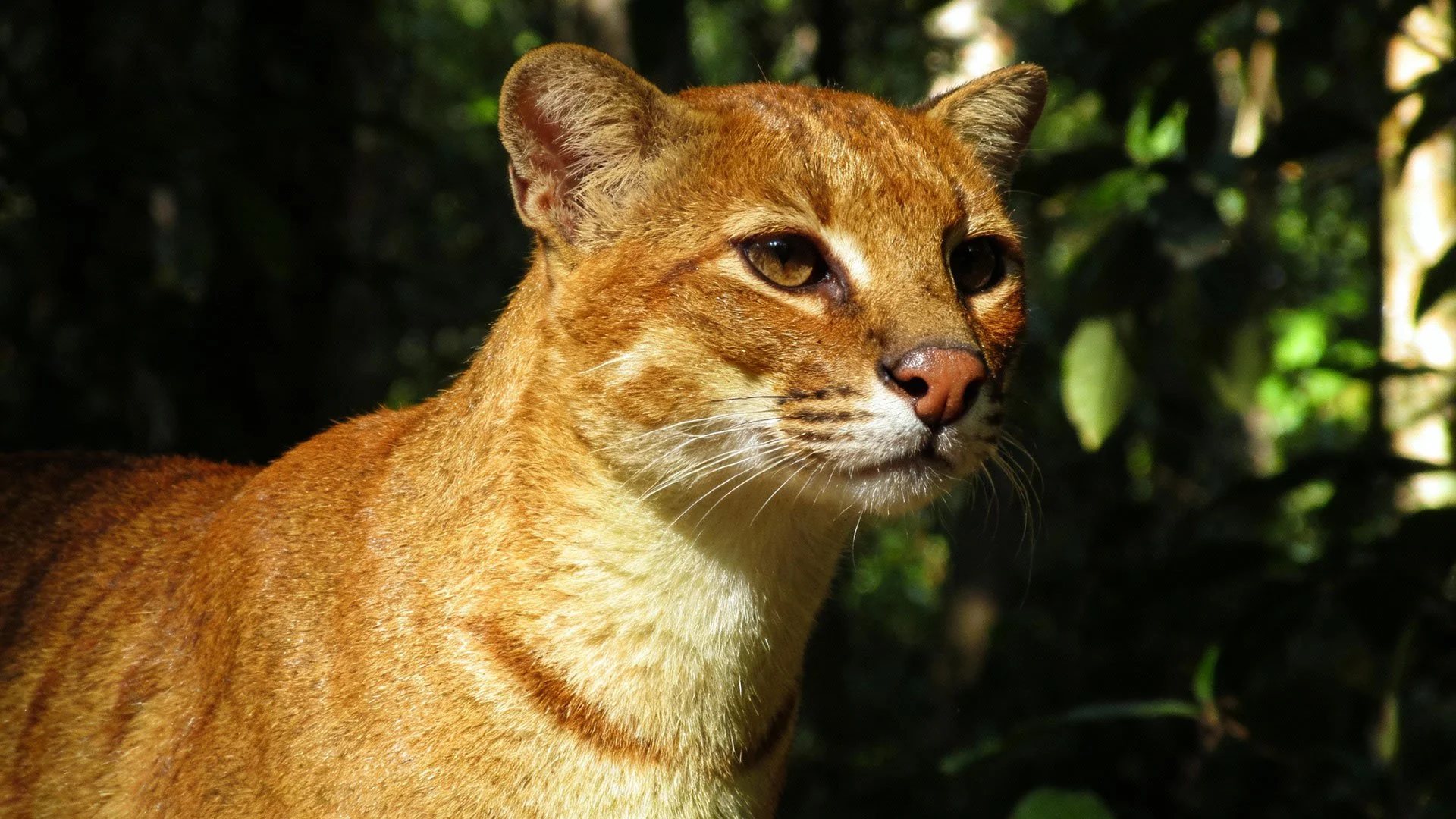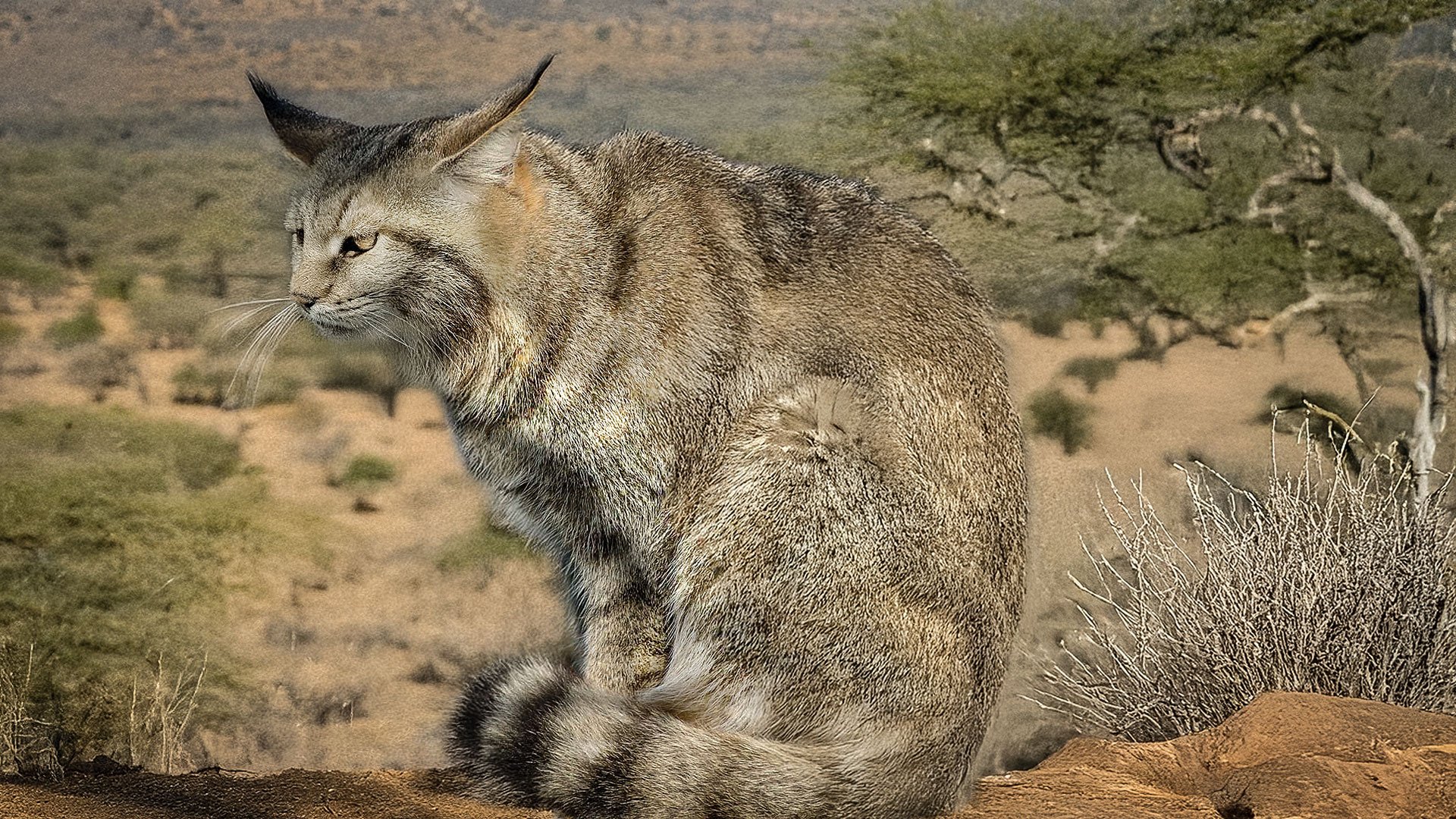The “Invisible” Wild Cat Standing on the Edge of Extinction
Most people have never heard of the African golden cat.
That’s not an accident.
This shy, forest-dwelling wild cat is so elusive that even many conservationists working in its habitat didn’t realize it lived alongside them until camera traps revealed its presence. For generations, local hunters knew it as Embaka—but to the rest of the world, it was almost a ghost.
Today, this little-known cat is standing on the edge of extinction. And thanks to a powerful alliance of science, community action, and even artificial intelligence, we finally have a chance to pull it back.
Meet the African Golden Cat: Africa’s “Cryptic” Forest Feline
The African golden cat is the only wild cat species found exclusively in Africa’s tropical rainforests, ranging across parts of Central, West, and East Africa. Adults can weigh up to around 16 kilograms (35 pounds) and are roughly twice the size of a domestic cat. They prey on birds, rodents, monkeys, and small antelopes, playing a vital role in keeping forest ecosystems in balance.
Despite being a top small predator in these forests, this cat is almost never seen.
Researchers describe the species as “cryptic” and “elusive.” Even biologists who’ve dedicated their careers to it have only glimpsed it a handful of times in the wild. For many years, the only evidence of its existence came from bushmeat snares and the stories of local hunters.
The International Union for Conservation of Nature (IUCN) currently lists the African golden cat as Vulnerable, with no reliable global population estimate—largely because it has been so difficult to study.
How AI and Camera Traps Are Finally Revealing the Truth
To protect a species, you first have to know where it lives and how many are left.
Starting around 2019, conservation biologist Mwezi “Badru” Mugerwa and partners launched what has become the largest coordinated camera-trap survey ever attempted for an African wild cat. Through the African Golden Cat Conservation Alliance (AGCCA), a network of dozens of conservationists across nearly 20 countries, they set up standardized camera grids across the cat’s suspected range.
This is where artificial intelligence comes in.
Nonprofit partners such as Panthera have been developing AI tools that can scan tens of thousands of camera-trap images and identify individual cats based on their unique coat patterns—like using fingerprint technology for fur. That breakthrough finally allows scientists to estimate density, not just presence.
Early findings show just how fragile this species is:
Even in protected areas, some sites are recording on the order of 16 African golden cats per 100 square kilometers, while others show much lower numbers, reflecting heavy hunting pressure and habitat disturbance.
The cats are active both day and night—“cathemeral”—but often shift to more nocturnal behavior to avoid human activity.
AI isn’t a gimmick here; it is literally helping us see a species that has been nearly invisible to science.
The Bushmeat Crisis: Snaring a Species Toward Extinction
In much of East and Central Africa, the African golden cat is not usually the main target of hunters. Instead, it becomes “collateral damage” in a much larger bushmeat crisis.news.
Wire snares are set for pigs, duikers (small antelopes), and other wildlife used for meat. These traps do not discriminate. Anything that steps into them—gorillas, leopards, antelopes, or golden cats—can be maimed or killed.
Research around Uganda’s Bwindi Impenetrable Forest and other sites has revealed:
In just one year, local hunters reported around 80 African golden cats caught in snares across three forests—roughly 88% unintentionally.cnn+1
In areas where hunting and snares are heavily used, the cat’s distribution and density are dramatically lower, sometimes reduced by up to half compared to areas with effective hunting restrictions.
Communities surveyed reported very limited direct conflict with golden cats (few livestock losses), which means most killings are not driven by “problem animal” retaliation but by indiscriminate snaring and, in some places, traditional uses of skins and body parts.
This is how a species slides toward extinction without most of the world even knowing its name.
Embaka: Former Poachers Turned Protectors
Faced with this crisis, Mwezi Mugerwa made a crucial choice: instead of treating local hunters as enemies, he invited them to become allies.
He created Embaka, the first community-based anti-poaching initiative focused on the African golden cat, named after the cat’s local name. Through Embaka and its partner programs, thousands of families across Uganda, Gabon, Angola, the Democratic Republic of Congo, South Sudan, and other range countries are now involved in protecting this cat and its forest home.
Key elements of this approach include:
Community camera-trap networks
Local residents—many of them former hunters—help deploy and maintain camera traps, report snaring, and share traditional knowledge of wildlife movements. This not only improves data, it builds deep local ownership of conservation.Alternative livelihoods (“Pig Seed Banks” and more)
Programs such as Piglets for Bushmeat (“P4B”) or “Pig Seed Banks” provide households with pigs or other income-generating support in exchange for giving up hunting and snares. As pigs reproduce, families pass on piglets to neighbors who also commit to stop poaching, spreading the benefits outward.Dental care and health support as conservation incentives
Through initiatives like “Smile for Conservation,” mobile dental units offer free oral health care to people living around protected areas. In return, communities help police against poaching and support anti-snare patrols.Community policing and social pressure
Local “Anti-Poaching Community Watch Groups” now involve well over a thousand families in some landscapes, creating powerful social pressure against snaring and supporting law enforcement efforts.
This model is turning poachers into protectors—protecting the forest, protecting the cats, and supporting human well-being at the same time.
Why This Matters for All Wild Cats—and for All of Us
The story of the African golden cat is not just about one “mystery cat” in a distant rainforest. It is a mirror.
It shows how human choices—from hunting to habitat destruction—can push an entire species toward extinction quietly, without headlines.
It shows how local wisdom, science, and new tools like AI can come together to give us a second chance.
It shows how protecting wild cats protects entire ecosystems: when mid-sized predators like the African golden cat disappear, it can trigger cascading imbalances that affect everything from plant regeneration to climate resilience.news.
At Big Cat Rescue, we believe that every wild cat, no matter how small, elusive, or little known, is a vital thread in the fabric of life.
The African golden cat is a powerful reminder that:
We are all connected—to each other, to forests we may never visit, and to species we may never see with our own eyes.
When a snare closes on a cat in a faraway rainforest, the shockwave travels through food webs, through communities, through the climate system that sustains us all.
When we protect wild cats, we are really protecting our shared home.
In truth, there is no “their forest” and “our planet.”
There is only one Earth. One web of life. One us.
How You Can Help Protect the African Golden Cat and Other Wild Cats
You don’t have to live near a rainforest to stand with Embaka, AGCCA, and other partners working to save the African golden cat.
Here are meaningful ways you can help:
Learn and share
Most people have never heard of the African golden cat. Simply sharing its story raises its profile and builds global support for conservation programs.Support community-based conservation
The most effective efforts to protect this cat come from within local communities—through alternative livelihoods, education, and health care. Supporting projects that center local people helps both cats and humans thrive.Reduce your own planetary footprint
Rainforests are under pressure from logging, agriculture, mining, and climate change. Every step we take toward a lighter footprint—eating lower on the food chain, reducing waste, choosing responsible products—helps protect the forests that African golden cats, leopards, gorillas, and countless other species call home.Stand with wild cats everywhere
Big Cat Rescue is shifting our focus entirely to protecting wild cats in the wild. When you support our work, you’re helping fund conservation partnerships, education, and advocacy that benefit species like the African golden cat and many other threatened felines around the globe.
One Cat, One Forest, One Planet
Somewhere tonight, in a rain-soaked African forest, an African golden cat will slip silently between the trees—unseen, unheard, but holding its place in the great living web we all share.
Our job, together, is to make sure that silence is not permanent.
By protecting wild cats like the African golden cat, we are not just saving a species.
We are honoring a truth that many of us feel in our hearts:
We are all ONE. One planet. One future. One chance to get this right.
Let’s use it—together—for the cats, for the forests, and for all of us.
https://www.cnn.com/science/african-golden-cat-ai-camera-trap-hnk-spc
https://www.savingafricangoldencat.com
https://news.mongabay.com/2024/10/africas-little-known-golden-cat-gets-a-conservation-boost-with-community-help/
https://www.nationalgeographic.com/premium/article/african-golden-cats-uganda-poaching-snares
https://www.indianapoliszoo.com/prize/news/2025-emerging-conservationist/
https://www.catsg.org/living-species-africangoldencat
https://www.sciencedaily.com/releases/2013/11/131112123329.htm
https://www.facebook.com/pantheracats/photos/a.393935558762/10158491549928763/?type=3
https://www.youtube.com/watch?v=Znc1WKr4VSQ
https://embaka.org
https://wildnet.org/pig-banks-and-poachers-protecting-the-african-golden-cat/
https://news.mongabay.com/2024/10/elusive-wildcats-may-hold-the-key-to-healthier-forests-in-africa/
https://bigcatrescue.org/conservation-news/who-is-that-cat
https://bigcatrescue.org/conservation-news/lessons-i-learned-from-the-cat
https://www.facebook.com/groups/bigcatrescueofficial/posts/2086972805374082/
https://bigcatrescue.org/conservation-news/how-to-rescue-a-big-cat
https://bigcatrescue.org/conservation-news/why-big-cat-rescue-uses-ai-generated-images-to-tell-the-stories-of-wild-cats
https://bigcatrescue.org/conservation-news/secrets-of-our-success
https://bigcatrescue.org/conservation-news/help-free
https://bigcatrescue.org/conservation-news/category/Big+Cat+Facts
https://vet.purdue.edu/news/pvm-collaborates-with-indianapolis-zoo-to-host-emerging-conservationist-award-winner-at-lynn-hall.php






